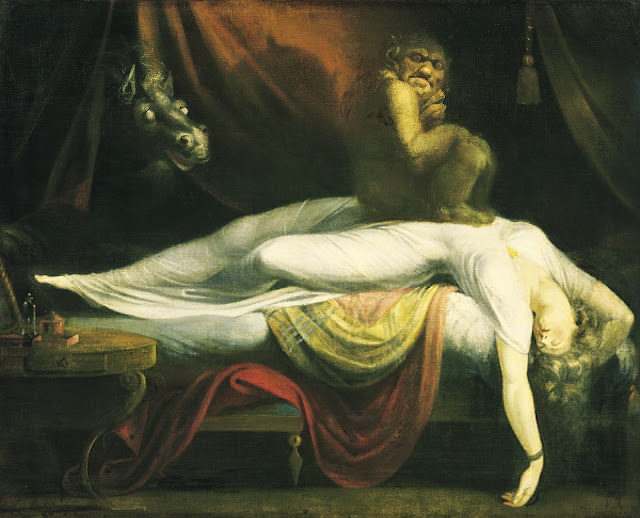We tackled part 1 of what
to expect when lucid dreaming earlier, where we talked about the different
sensations you will experience as you go through the different stages of sleep
and into lucid dreaming. We discussed there that some sensations are easier to
deal with than others, and then there are those that truly need to be
understood and faced with courage in order to overcome: sleep paralysis and
nightmarish hallucinations.
What is sleep paralysis?
The first step of taking
control of something we fear is to understand it, so, let's understand! Sleep
paralysis is not some evil phenomena that just hits us with no rhyme or reason.
In fact, sleep paralysis is a very crucial element of sleep, as it is the
mind's way of protecting the body from being harmed when you act out your
dreams.
When our ancestors first
climbed trees to stay away from predators, sleep paralysis served to save their
lives by not having them move unnecessarily and fall off the tree. These days,
sleep paralysis makes sure we don't suddenly punch our night light when we
dream.
The fear of sleep paralysis
comes from one crucial fact: that while sleep paralysis affects most of the
body (with the exception of the lungs so one can breathe) it does not affect
the eyes. And this is where the nightmarish experiences come in.
Sleep paralysis switches on
and off around the time when we are crossing from being asleep to being awake.
And because of this, sometimes people tend to wake up while the sleep paralysis
“switch” hasn't been turned off yet. It is a very disconcerting at best,
horrifying at worst, feeling to experience being awake and not being able to
move.
In the mildest cases, it
simply causes the body to not be able to move for a few seconds or minutes. In
the worst cases, the sleep paralysis includes terrifying hallucinations, which
science has attributed to causing many reports of ghost sightings while in bed,
alien abductions, and many more.
And because experiencing
visions and hallucinations are part of the lucid dreaming experience, people
who associate it with the hallucinations caused by sleep paralysis, and end up
being turned off from trying.
So if this is a very real
and terrifying risk, what should we do?
Fear is the mind killer
The best way to deal with
sleep paralysis, and the hallucinations that may come from it, is first to be
able to stem your fear. Once you find yourself in a sleep paralysis state, it
is very important NOT to panic. Especially since, and this is very important,
it is the same fear that one experiences in sleep paralysis that causes the
hallucinations!
In a sleep paralysis state,
your mind may already be in a half-dreaming stage. But if the conscious mind
(that is, the one that is awake and unable to move) panics, this can cause the
part of the mind that is still dreaming to conjure up horrifying visions and
images. It does this because the mind will try to find “explanations” to what
is happening and why you are feeling fear, to make sense of what is going on.
Oftentimes this is based on
your own personal or cultural beliefs. Whereas the Japanese might find
themselves hallucinating a kanashibar demon sitting on their chest, the Swede
might see “the old hag”, or the American might see aliens trying to experiment
on them.
But if you can recognize
sleep paralysis when it occurs, and calm down while it is happening, not only
will you greatly reduce the chance of experiencing terrifying hallucinations,
you will also be able to deal with them should they still happen (since you are
aware of your situation and know that what you see isn't real!)
Most importantly however,
is that sleep paralysis is actually a -very- important element of certain lucid
dreaming techniques, and can easily lead to astral projections and out of body
experiences should you be able to do it with good control. So don't be afraid
of sleep paralysis! In fact, we have previously discussed many different lucid dreaming techniques as well as different tips on how to start lucid dreaming.
To get you started, listen to this binaural beats track for relaxation that can help you work fast as well as set the mood for lucid dreaming.
Also, take a look at our binaural beats albums
collection. You can find numerous tracks suited to your lucid dreaming needs,
as well as tracks for meditation, relaxation, and more: http://brainwavepowermusic.com/albums.


No comments:
Post a Comment